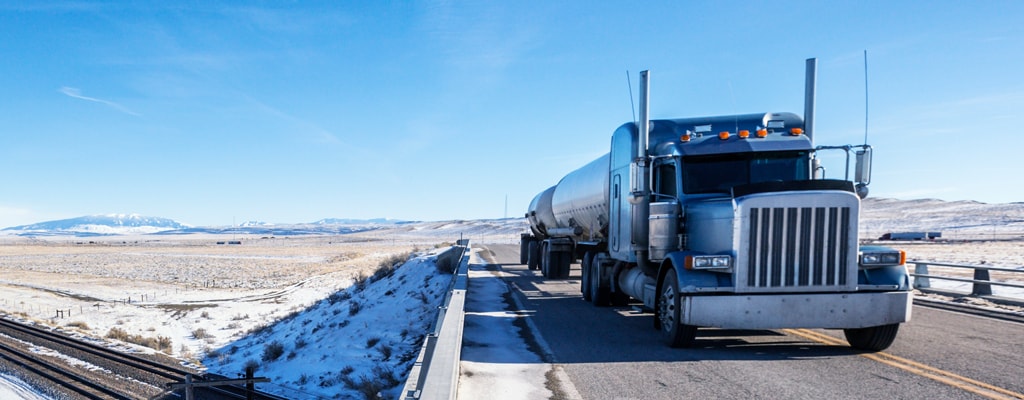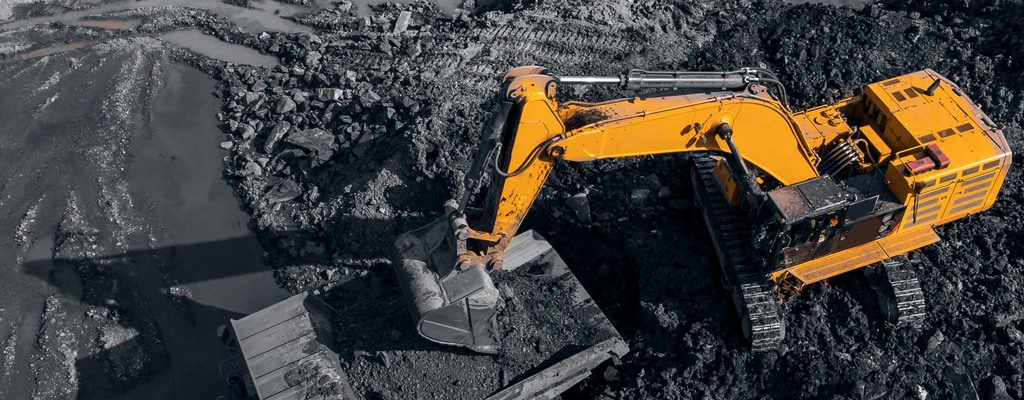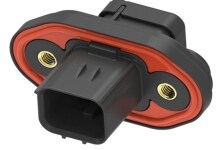
Trend Insight
High-Speed Data In Harsh Environments
Ensuring high-speed data transmission in commercial vehicles requires you or your designers to carefully consider the components, their placement, and the impact of environmental conditions at the early design stage. Read our paper to learn more.
AUTHOR
Christian Manko, Data Connectivity Product Manager, TE Connectivity
Technology advances
Customers are demanding functionality that automates or enhances operational tasks to increase driver productivity and safety and, in many cases, also brings down the total cost of ownership. Features such as automatic adaptive braking and steering, onboard diagnostics, vehicle-to-vehicle (V2V) and vehicle-to-infrastructure (V2I) communication, and cameras that give the driver a 360-degree view of their environment are becoming basic customer requirements.
These features require large amounts of data to be transmitted at high speeds. As engineers design new models to meet these customer demands, the challenge is to ensure signal integrity and data transmission in the harsh environment of the trucking and off-highway industries.
Applying Ethernet in a mixed architecture
To handle increased data demands and high-speed connectivity, sophisticated network infrastructure is needed. CAN bus architectures, which typically manage speeds up to 500 Kbps, have been the stalwart backbone for most heavy-duty vehicles’ communication networks for a few decades. However, the data bandwidth required for advanced vehicle functionality and automated features for safety and productivity is too great to be served by CAN alone.
Single-pair Ethernet protocol (100BASE-T1 at 100 Mbps or 1000BASE-T1 at 1 Gbps) provides the ability to transmit data at high speeds. Using Ethernet networks and connectors allows OEM designers to seamlessly integrate more devices onto the network and accelerate data connectivity in their vehicles. As a point-to-point topology though, Ethernet changes the electrical and electronic (E/E) architecture of the vehicle. As OEMs decide to add more features and devices, designers will also need to factor in Ethernet switches to direct the signal and gateways to communicate between Ethernet and CAN.
To optimize space, weight, and performance under harsh conditions, designers must consider in the first stages of design how they will integrate Ethernet where needed for advanced functionalities. Decisions such as how many cables to place inside the vehicle and where to place them, where to place Ethernet switches and whether the switch should be in an existing electronic control unit (ECU) or a new dedicated ECU must be made for every feature that requires Ethernet. This is crucial to avoid or mitigate issues with electromagnetic interference (EMI) or other mechanical disturbances.

For example, 360-degree cameras on a heavy-duty vehicle transmit high-speed data from the outside of the vehicle to the in-cabin display for the driver to view. Four cameras (one on each side of the vehicle) send signals to an ECU. Designers need to plan where to place a switch to combine the data from the four cameras and send that data in one signal to the ECU. The switch can be in the vehicle or in one of the cameras, which would have four ports to input data from the three other cameras and then send out data. Another option is to integrate the switch into the video display monitor.
With active automated functions such as automatic adaptive braking and other advanced driver-assistance systems (ADAS) that include a multi-sensor array, even more, thought behind the design is required at earlier stages. Each sensor will have a dedicated communication link to an ECU. The more sensors the vehicle has, the more cables and communication links are needed. An autonomous heavy-duty vehicle of the future would need a wide sensor array for about 16 radars, 10 lidars, and 10 cameras all around the vehicle. That’s more than 30 cables and links that need to be EMI resistant and smartly routed while considering space, weight, and EMI to maintain signal integrity inside and outside of the chassis and as the links come into one ECU. More data means more bandwidth needs, and that means connectors and cables that can handle more speed as well.
The immense size of industrial and commercial vehicles presents a challenge to maintaining signal integrity and transmitting data reliably. For transmitting an Ethernet signal in cars, the Ethernet standard specifies technical requirements up to 15 m (49 ft). But in trucks, buses, and off-highway vehicles, signal integrity must be maintained for longer lengths, up to 40 m (131 ft), while withstanding heavy vibration, extreme temperatures and shock, heavy dust conditions, and more.
The Ethernet standard currently specifies for up to four in-line connections along that 40 meters; designers need to assess how long each segment can be to maintain optimal signal integrity. Factors affecting this could be exposed to outside elements or high temperatures, placement near an antenna or other component that could cause EMI. Routing is a key element of design and the entire physical layer must be scaled for the performance expected.

Shop our Solutions for Connected Heavy-Duty Vehicles
Choosing the right components
“When designing a mixed architecture with CAN and Ethernet, engineers need to think about the entire connectivity infrastructure upfront in terms of what advanced, data-heavy functions they will be incorporating,” explains Abbas Alwishah, data connectivity engineering manager at TE Connectivity. “The more advanced technology gets, the more collaboration between OEMs and suppliers is important. If a customer tells me they need a high-definition camera or a proximity detection system that works with very low latency, I can explain all the individual components needed for that function or system—sensors, connectors, cable assemblies, antennas, processors, display, etc.—and make recommendations on the topology to optimize performance, space, weight, and costs.”
Choosing Ethernet-compatible components that can withstand harsh conditions is key to reliable data transmission in long-lifetime, heavy-duty vehicles. Automotive Ethernet connectors (those designed originally for passenger vehicles) may be used in the cabin or other areas of the vehicle not exposed to extreme shock, temperature, or other elements, where more ruggedized connectors and longer-length cables are not needed. A high-quality unshielded twisted pair cable is suitable for Ethernet in most areas of the vehicle, with shielded twisted pair cables used only where necessary. The designer’s choices also will help control costs and save space and weight.
Modular and scalable MATEnet connectors developed by TE for automotive Ethernet, for example, can also be used in heavy-duty vehicles for applications requiring mid-to large-size data volumes and low latencies, like onboard diagnostics (V2X technologies), telematics, dashboard infotainment, ADAS, and more. The connectors can transmit data at 100 Mbps to 1 Gbps (per IEEE 100BASE-T1/1000BASE-T1) and can be used with unshielded or shielded twisted-pair cables.
On-chassis components require more than just ruggedness. They must demonstrate mechanical reliability, be serviceable, withstand extreme temperatures and operate efficiently with longer channel lengths. When dealing with higher frequencies, cable/connector quality and design can significantly impact channel performance which affects system performance and, in turn, application performance. Especially for on-chassis components, engineers need to opt for cables and connectors specifically designed for high-speed data transmission in harsh environments.
“When trying to meet mechanical resilience needs, some engineers may instinctively think to add a larger, more robust housing, but thicker walls may negatively impact electrical performance,” states Mark Brubaker, data connectivity product manager for TE. “It’s important to look at what historically has worked, but also to take a further step to understand this new generation of electrical needs for transmitting high-speed data and test how connections will perform given the higher frequencies involved.”
Product choice and placement cannot be an afterthought when designing in advanced and automated functionality that requires high-speed data transmission. When adding Ethernet to heavy-duty vehicle architectures, designers must think about and plan for the complexities involved much earlier and deeper than before to successfully balance reliability and mechanical resilience with electrical requirements for high-speed data and longer channel lengths, as well as serviceability needs.
To Learn More About our Solutions for Connected Vehicles

Autonomous Driving
Ethernet Solutions
Learn more about the connectivity requirements to enable commercial and industrial vehicles autonomous driving.

Data Connectivity
Heavy-Duty Vehicles Solutions
Discover why design engineers must consider incorporating Ethernet systems in their industrial and commercial vehicles and machinery to meet future customers' needs.

Ethernet Connectivity
Heavy-Duty Vehicles Requirements
Discover the considerations we took to design our Ethernet connectors for heavy-duty vehicles.
Originally published in Truck & Off-Highway Engineering



